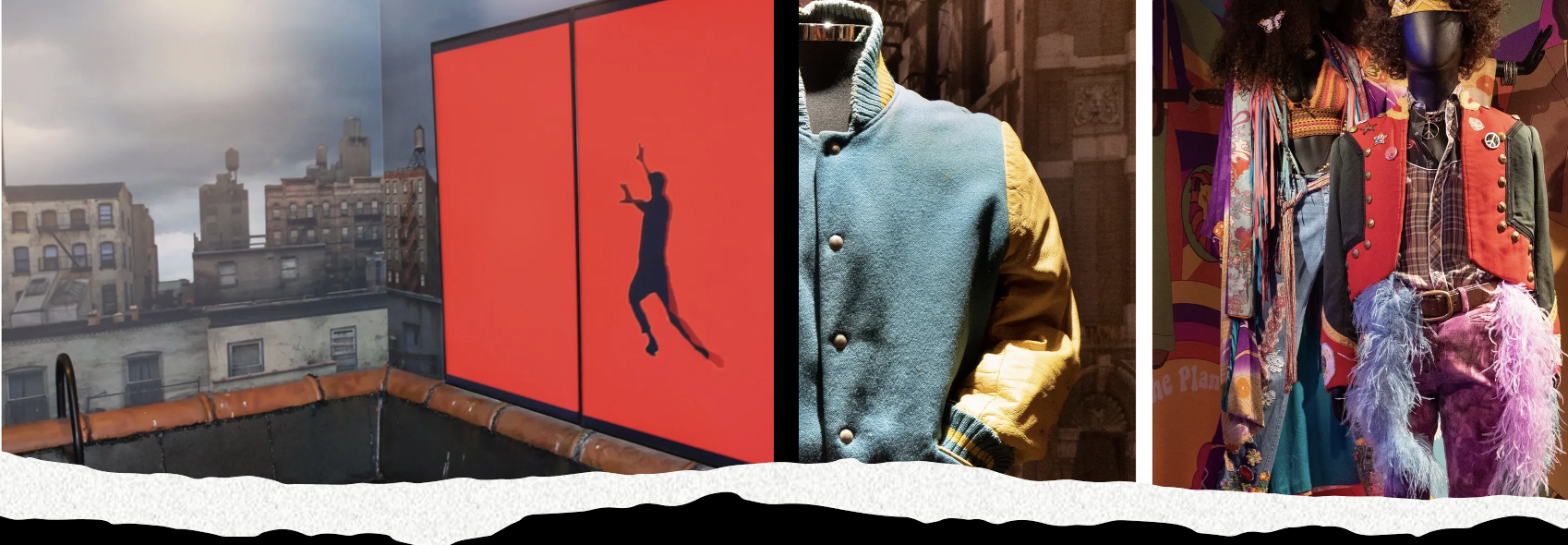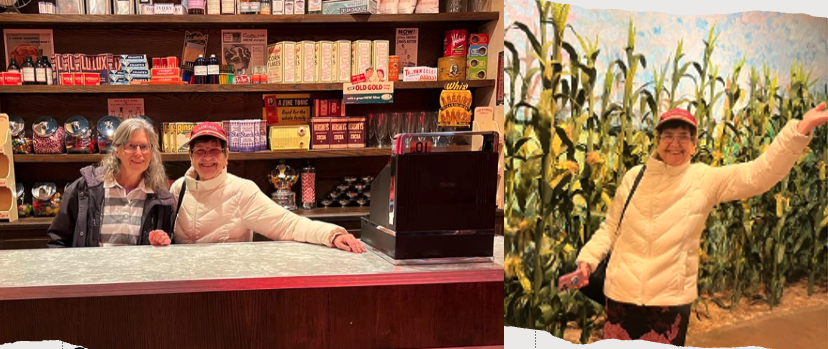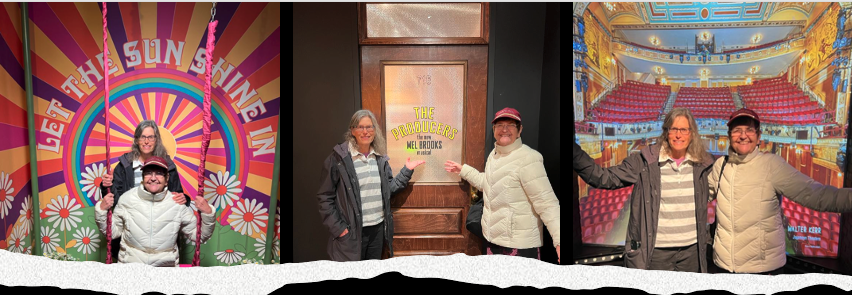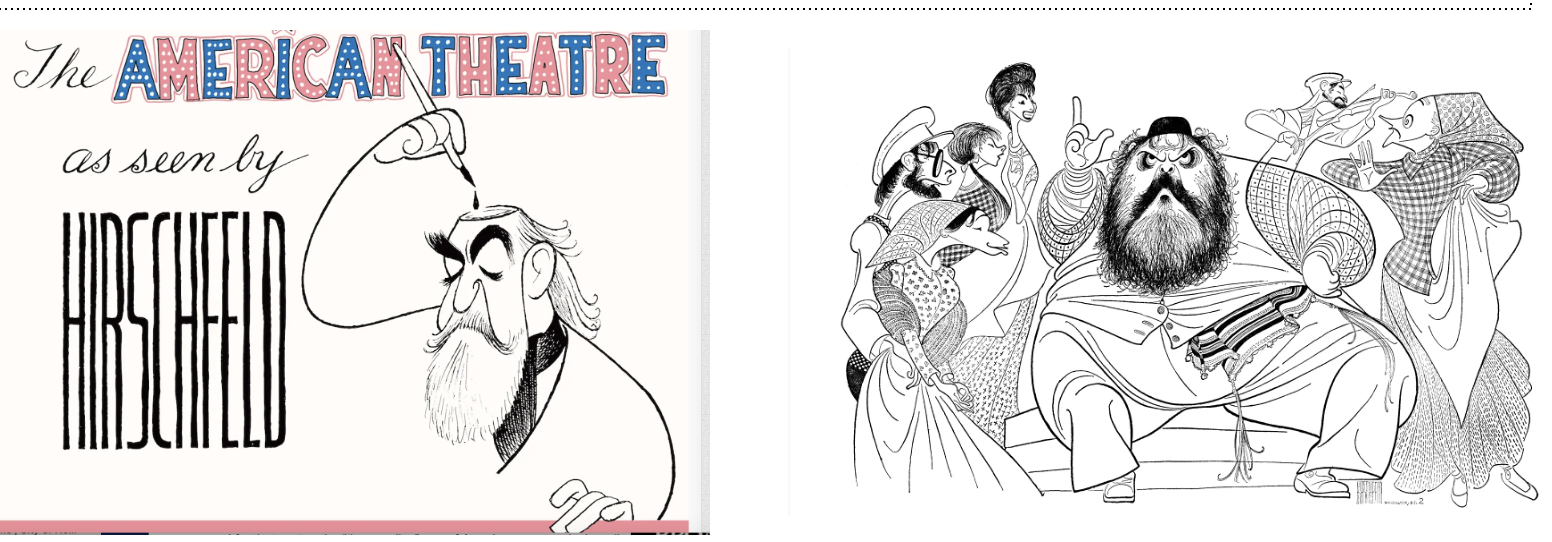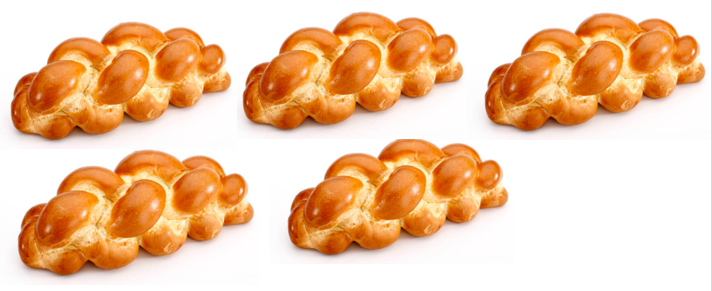Discover – Museum of Broadway
By Sue Weston and Susan Rosenbluth – Two Sues On The Aisle
For anyone who remembers dressing up in costumes as a child and dreaming of becoming a star on Broadway—or at least meeting one—the Museum of Broadway, offers a behind-the-scenes peek that includes history and memorabilia with hands-on experiences and photo opportunities galore.
Located in the heart of Manhattan’s theater district just off Times Square at 145 West 45th Street between Sixth and Seventh Avenues, this non-descript building hides 25,000 square feet of theatrical delights, taking visitors on a chronologically organized trip through the evolution of theater in New York City. Guides, most of them aspiring actors and actresses, are on hand to share information and test visitors’ knowledge.
The museum is the brainchild of Broadway producer, Julie Boardman, responsible for shows such as Funny Girl and Company, and Diane Nicoletti, founder of the Rubik Marketing public relations agency. Their initial focus was on preserving costumes, props, and artifacts from Broadway shows, keeping them from the dumpsters and using them to create an interactive experience that would educate visitors about the production process.
Open since November 2022, it is the first permanent museum dedicated to documenting the history and experience of Broadway theatre and its profound influence on shaping Midtown Manhattan and Times Square.
Those looking for evidence of the Jewish influence on Broadway—often referred to as the American-Jewish community’s most overwhelming contribution to the nation’s artistic and cultural scene—will not be disappointed. The significant role of Jews and Jewish tradition on Broadway includes not only the themes of some of the most successful shows but also the recognized playwrights, composers, writers, and lyricists themselves: Irving Berlin, Jerome Kern, George and Ira Gershwin, Richard Rodgers, Leonard Bernstein, and Stephen Sondheim are just a few of the artists whose talent led to a vast array of productions (many featured at the museum), including Show Boat, Oklahoma!, West Side Story, Chicago, Fiddler on the Roof, A Chorus Line, Carousel, My Fair Lady, The Producers, Hello, Dolly!, South Pacific, Annie, The King and I, Cabaret, Hairspray, Wicked, and Pippin.
Preserving the Past
Entrance to the museum is through the gift shop, and, from there, visitors are assigned to a tour group led by an enthusiastic guide, poised to answer questions and share facts as the three-story venue is navigated. The tenor of the tour is established with a short film on the history of Broadway which explains that theater in New York City began with Yiddish theater and advanced as music, dance, and more intricate plots were added.
Once inside the museum, visitors are exposed to a variety of aspects detailing the inner workings of Broadway shows, including costumes and reconstructed sets, all displayed in historical context. Information is offered in easily digestible bite-sized nuggets and elaborated upon by the museum’s deliciously knowledgeable guides.
Wandering through the connected series of rooms, each devoted to a specific show, displayed within its own historical timeframe, is enthralling. Caught up in the magic, visitors become part of the evolution of theater in New York City, actually stepping into recreations of sets, each of which offers great photo ops. There are over a thousand objects and photographs, many of which are on loan from artists, creators, producers, and organizations, including Disney Theatrical Productions and the Public Theater.
Photo-Ops: You Oughta Be in Pictures
Did you know the Ziegfeld Follies, one of Broadway’s first hit shows, was launched in 1907 by Florenz Ziegfeld, Jr. on a roof garden? A new version was presented annually until 1925. The Museum of Broadway’s room dedicated to this early phenomenon is decked out in pink frills with photographs of performers on the walls, above a gilded dressing table.
Stalks of corn as high as an elephant’s eye fill the space serving as a tribute to Oklahoma! as “Oh What a Beautiful Mornin’” plays softly in the background. It serves as a great photo op before going on to see photographs and a movie clip of the original 1943 production, replicas of Richard Rodgers’ music manuscripts, and Oscar Hammerstein’s lyrics. Oklahoma! was one of the earliest Broadway shows to integrate music, songs, story, and dance.
Show Boat, the Kern-Hammerstein musical, whose exhibit has its own corner of the museum, was first. Its display includes walls covered in musical scores surrounding a costumed mannequin.
Who could resist stopping to take a selfie at the counter of Doc’s Drugstore from West Side Story while across the room, a video of the iconic “I Want To Be in America” dance scene runs on a continuous loop? The Jets jacket, worn by actor Don Grilley, who played Tony in the original 1957 Broadway company, was rescued from a closet where it had hung for decades.
In the room dedicated to Hair, the costumes on display include a red-and-green military jacket worn in the original 1968 production. While some theatrical historians cite Hair as the first Broadway show to display nudity, it seems that honor was already taken decades earlier by the Ziegfeld Follies.
Other spaces for fun photo-ops are available by the door to The Producers and on a street scene from Rent.
The Business Side
There are walls covered with Playbills, past and current, providing not-too-subtle encouragement to buy tickets, as well as a map of all Broadway theaters. The timeline of shows leaves plenty of empty space which the museum makes clear will hopefully be filled with new productions as they add chapters to the story.
The final segment of the museum takes viewers from concept to creation. It is designed to explain how shows are actually made, showcasing the necessary—and all-too-often unsung—work of writers, costumers, stage managers, and press agents. It is a necessary reminder that there is a business side to Broadway.
For those so inclined, information—including a website—is provided about jobs and professions. For a moment there, one of the Two Sues on the Aisle actually considered a career change.
On a recent visit to the museum, the featured exhibition showed off sketches and cartoons of the iconic theatrical caricaturist, Al Hirschfeld. Descended from a long line of Orthodox-Jewish tailors in Russia, he was born in Missouri in 1903 and relocated to New York when he was twelve. He died in 2003, just short of his 100th birthday, leaving a legacy of caricatures that had been published almost weekly in The New York Times Sunday Arts & Leisure section.
Each of his pictures bore at least one depiction of his daughter’s name, NINA, woven somewhere into the image, along with a number beside his signature, letting his fans know how many times her name appeared. The search for “NINA” has been referred to as “a national insanity.”
In fact, the hidden NINAs were used by both the Federal Aviation Agency and radiologists-in-training to test and heighten perceptual ability.
At the museum, a replica of the old barber chair in which this eminently successful American-Jewish cartoonist sat daily as he drew at an old oak drafting table in his East 95th Street townhouse was on his display.
It is hoped that the museum will consider such exhibits on other figures whose work was not in performance but in tangential fields that, over the years, have added to Broadway’s spell on the country and the world.
A Five-Challah Experience
Ms. Boardman and Ms. Nicoletti are proud, describing their efforts,
“We’ve teamed up with internationally renowned artists, designers, and theater historians to create an interactive experience that highlights groundbreaking moments in Broadway’s history—the moments that pushed boundaries, challenged social norms and paved the way for those who would follow,” says Ms. Boardman, adding that people “don’t realize shows take five, seven, ten years to put together.”
The result is an immersion into glamor, glitz, and magic, allowing visitors to walk away with a greater appreciation and love of theater.
Tickets can be purchased online or by calling 212-239-6200.
The experience is eye-catching, educational, and photo-worthy, a great rainy-day activity or a pre-theater jaunt to bring back nostalgic memories of Broadway shows, place them in a historic perspective, and enjoy an opportunity to get an up-close look at memorabilia.
*******
Two Sues on the Aisle bases its ratings on how many challahs (1-5) it pays to buy (rather than make) in order to see the play, show, film, book, or exhibit being reviewed.
Museum of Broadway received a 5 Challah rating


